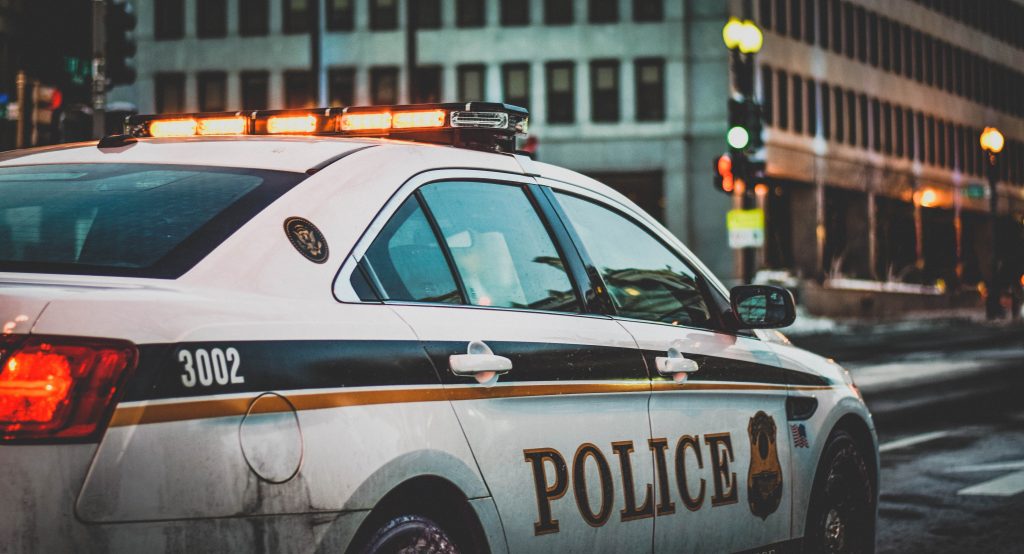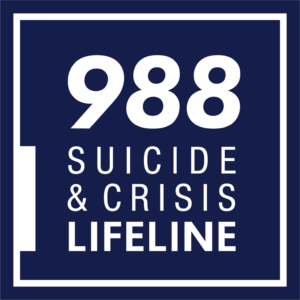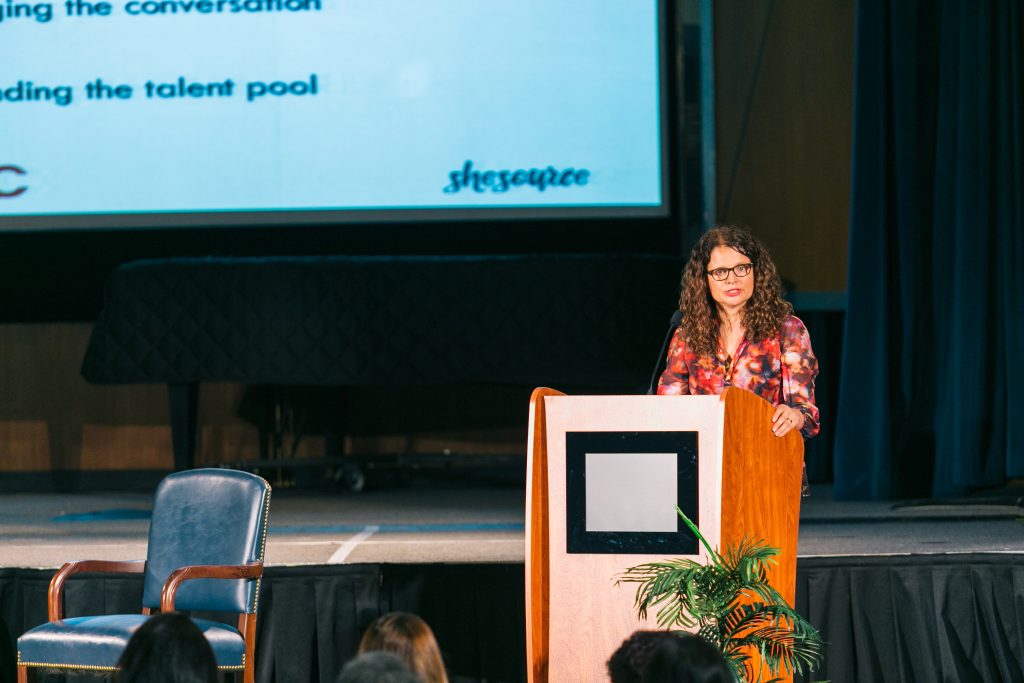
If you ask Carroll Bogert, crime news in the U.S. is broken.
Building off renewed interest in the Central Park Five case spurred by Ava Duvernay’s Netflix series “When They See Us,” Bogert attacked criminal justice coverage in a May 2019 op-ed published by the Los Angeles Times and the Marshall Project, the nonprofit criminal justice news outlet where Bogert serves as president.
“News coverage has contributed to wrongful convictions and, more generally, to decades of draconian criminal justice policy,” she said.
The Netflix miniseries follows the arrest, conviction, prison sentences and eventual exoneration of five young men who came to be known as the Central Park Five. The series has had considerable impact, affecting key players in the case. A prosecutor who advanced a theory that the defendants formed a “wolf pack” to attack a jogger lost a lucrative publishing contract. Another gave up her position in the Columbia University Law School.
Yet media outlets that swallowed the “wolf pack” framing whole and uncritically echoed the prosecution’s story seem to have escaped largely unscathed. The New York Daily News even republished its infamous “Wolf Pack’s Prey” story in 2013, never noting its role in amplifying a false narrative.
Today, the criminal justice system is at the center of bipartisan legislation and partisan debates. It’s also increasingly a focus of media coverage, with national outlets rolling out major investigations and newer nonprofit news outlets such as The Appeal and The Marshall Project reporting exclusively on the topic.
But crime is local, and so is most of the crime reporting Americans see. Some veterans on the beat worry that local newsrooms, increasingly asked to do more with less, may inadvertently harm themselves, their communities or the institution of journalism with their coverage. To report responsibly on this high-profile and complex beat, they say, newsrooms will need new ethical standards, deep conversations, better training and more diversity in the ranks.
‘Where is the line?’
Keri Blakinger now reports for the Houston Chronicle, where she spends much of her time covering prison conditions, but some of the toughest ethical decisions she’s wrestled with as a journalist came on her first beat: breaking crime news.
It’s a common assignment for the youngest and least experienced reporters, who typically have no background in criminal justice. “I get why that happens,” Blakinger said, “but it means that the people who have to face these questions everyday don’t have the years of knowledge developed to be able to ask questions as broadly, in many cases.”
Reporters face decisions about what crimes are worth covering or whether to run a mugshot photo, Blakinger said, and in the current media environment, many will have to decide on their own.
“Maybe you have a really good editor who has a good sense of this. Maybe your editor doesn’t give a shit,” Blakinger said.
For Blakinger, these questions are personal. Having spent 21 months behind bars following a 2010 drug arrest, she remembers what it was like to see her own mugshot in the newspaper.
But in her first reporting job, she sometimes found herself writing the kind of low-level crime stories that she now feels might do more harm than good. These questions later became a source of newsroom dialogue.
“We definitely started having a lot more discussions about ‘Where is the line?’” Blakinger said, noting that what might count as a newsworthy crime at that alt-weekly in Ithaca, New York, was different than at the Houston Chronicle. “It’s a little bit of a different ballgame when one of the towns you’re covering has 5,000 people.”
Newsrooms need to talk about these things, Blakinger said, so individual reporters don’t have to make these choices on their own.
‘The equivalent of eating a giant bowl of M&Ms’
Some veteran crime journalists criticize the “If it bleeds, it leads” editorial approach, arguing that the most important stories are often not the most dramatic — or the most popular.
Janine Anderson, who spent eight years covering crime and courts for Wisconsin newspapers, quickly learned that she could churn out a high volume of stories based on the day’s criminal complaints.
“They would fill the paper, they were read well online, but they didn’t feel to me like I was actually doing anything that helped people understand what was happening in the community,” Anderson said.
For the readers, Anderson believes, “It was the equivalent of just eating a giant bowl of M&Ms. You’ve consumed a lot of individual things, but you don’t walk away from it feeling full the way you might from a larger analysis piece.”
But those bigger stories can be easy to miss, said Ted Gest, Washington bureau chief for The Crime Report and president of Criminal Justice Journalists, the nation’s only association of criminal justice reporters.
Covering local municipal courts for the St. Louis Post-Dispatch in the 1970s, he overlooked a big one. “I completely missed what became the Ferguson story — that the local municipal courts in that area use municipal courts as cash generators and discriminate against minorities,” Gest wrote in an email, praising recent coverage of the practice by his former paper. “I do not know if the courts then were as bad as they were at the time of the Ferguson shooting in 2014, but they may have been.”
There’s good coverage of systems and trends today, said Gest, who serves as a juror for the John Jay/Harry Frank Guggenheim Awards for Excellence in Criminal Justice Reporting and reads dozens of crime stories each weekday to write a crime news digest, but he’s surprised there’s not more.
“It’s a very common cliché these days among politicians to say, ‘The criminal justice system is broken.’” Gest said in an interview. “I don’t think it is, but if that’s really true, you’d think we’d be seeing lots of reporting on that.”
But reporters writing these deeper stories have to work harder to engage readers, said Pamela Colloff, who’s won awards for long-form stories on blood spatter pattern analysis and wrongful convictions. Her secret: character-driven narratives like“The Witness,” which tells the story of the death penalty through a the eyes of a woman whose job required her to observe 278 executions.
“We can write all day long about the problems in the criminal justice system, but it’s not until you get people emotionally invested in a particular person’s journey or a particular case or a particular wrongful conviction or what have you that — I believe — they’re really going to care,” Colloff said.
But those stories take time that many reporters don’t have. “I have the luxury of being able to put in the time to hopefully do things right,” Colloff said. “That doesn’t mean by any means that I always do.”
‘We should have been more skeptical’
Speaking from experience, Gest offers another critique:
“A large percent of stories you see are told totally, 100% from the police viewpoint,” Gest said. Reporters who are new on the beat or strapped for time often rely heavily on what the police tell them, but they should consult other key players like criminologists, victims’ advocates, judges, drug treatment counselors or probation officers, Gest argues.
Reporters shouldn’t treat any source as authoritative, Gest said. It’s a lesson he’s learned from experience.
He recalls one criminologist whom journalists routinely quoted in the 1990s, who said crime would keep going up — a theory that already by the early 1990s had proven false.
“I quoted him about ‘This thing is going to be out of control,’ using, if you can imagine, a graph going straight up for years… and this is a responsible guy who was testifying in Congress about this,” Gest said. “Looking back on that, we should have been more skeptical.”
‘The bullets are still flying’
Gary Fields, who spent more than two decades covering crime and criminal justice for the Washington Post and USA Today, said crime reporters often don’t give a story the time or attention it deserves.
Pressure to meet deadlines or be first on a story can push reporters to publish before they’ve got all the facts, and incomplete or inaccurate stories can harm multiple players. Outlets may have to issue corrections or retractions or fight lawsuits. Reporters may face reprimand. Innocent people may be unjustly maligned, and readers may lose confidence in journalists’ reporting.
“That early stuff’s often not accurate because they’re still trying to figure out what’s going on. We’re out here trying to get the story, and the bullets are still flying, and the shell cases are still dropping,” Fields said.
“That’s kind of a recipe for alterations in your story… You just kind of keep going and hope that this attention deficit disorder society we’re now living in doesn’t remember what you said initially.”
With the move to digital and the accompanying 24-hour news cycle, the pressure has only increased, and reporters sometimes choose being first over being right, Fields said. His advice: “Get it right first, then get it first.”
And, he said, outlets ought to stick with a story to the end. Back when he was a young reporter in Louisiana, he’d visit the Bossier Parish Jail each Sunday to copy down the arrest log.
“Unless it was some high-profile case, we never went back to say, ‘So how was this resolved?’” Fields said, so a reader would never find out whether the charges were dropped, or the case was dismissed. Looking back, Fields said, “That was a huge gap.”
Fields now believes that any journalist who names someone in an arrest is responsible for tracking the story and reporting on its resolution, since an unfinished story could lead to stigma or employment consequences for the person named. “I feel like you owe them that much,” Fields said.
‘Remember the humanity’
With the proliferation of true crime stories on Netflix and podcasts — expanding what some call the “true crime industrial complex” — Colloff worries that the already blurry lines around crime journalism are getting even harder to see.
“It’s something I think about on an almost daily basis because when you’re writing a long-form narrative, it has to be engaging and vivid and thought-provoking,” Colloff said. “How do you write narratives that fulfill that mandate without treading into exploitation or something that feels more like entertainment?”
We should “remember the humanity of everyone involved,” Colloff said, be they victims, perpetrators or anyone in between, and “always have that at the forefront of what you’re doing.”
Much crime reporting doesn’t do that, Anderson said. “It’s the news equivalent of looking at an accident when you drive by it.”
That “rubberneck coverage” can feed division and prejudice within communities, Anderson said. “It becomes a lot of like, ‘Look at that over there! I’m glad I don’t live in that neighborhood.’”
Sensational coverage can also affect whether justice is served. “If you take virtually any wrongful conviction and you spool it back to the beginning, there is very often terrible media coverage at the beginning,” Bogert said in an interview. “I just think very few people who are accused of a crime or involved in a crime come out of it feeling like the media did the right thing, and we’ve got to ask ourselves why.”
Reporting ‘close to home’
One way to promote more nuanced reporting: Hire journalists who’ve experienced the criminal justice system firsthand.
“When you’re reporting on issues that hit close to home, you know what questions to ask and can more easily see how to elevate a story because you might be aware of other angles that someone without that connection would not be aware of,” Blakinger said.
Some might argue that a reporter’s criminal history would bias her reporting, but Blakinger disagrees. “We wouldn’t question, ‘Can women cover women’s issues?’ (or) ‘Can LGBT people cover gay rights issues?’” Blakinger said. “Reporters can be fair or unfair and I don’t think it’s reasonable to make assumptions about someone’s fairness based on their past.”
Her own experience might make her more zealous about her work, she said, but that’s a good thing, just as female reporters might be more passionate about covering women’s issues and LGBT reporters might be more passionate about covering LGBT issues.
“I don’t think those are bad things,” Blakinger said, “and I don’t think it’s a bad thing if you get a criminal justice reporter with a criminal record who can come at it with more intensity than someone with no personal connections to it.”
Colloff argues this reporting is yet another example of the value of diversity in the workplace. Compared to her own early-career self, those who’ve been victims or served time would have a lot more perspective.
“It shouldn’t be unusual,” Colloff said. “I think we miss something if we don’t have more people in the mix.”
‘How does this whole equation balance out?’
Headlines like “Wolf Pack’s Prey” are — hopefully — a thing of the past, Fields said.
“I hope that there’s enough awareness of the power of language,” Fields said, citing the dehumanizing effect of terms like gang and mob. “The words can subtly do things in terms of the interpretation of your audience.
“I hope we have seen enough exonerations in my profession… for us to always keep a little air of suspicion,” Field said.
Blakinger is hopeful too. She sees journalists, including in her own Houston Chronicle newsroom, engaging in “evolving discussions” on issues like what terms to use to describe people in prison or whether it’s appropriate to publish a mugshot.
She believes these conversations, which might not have been imagined five or 10 years ago, are an ethical obligation for the profession.
“While it’s not our responsibility… to do journalism that doesn’t harm people, it should be, morally, as humans, a thing we’re thinking about,” Blakinger said. “If we’re causing harm… what is the news value and how does this whole equation balance out?”
The Center for Journalism Ethics encourages the highest standards in journalism ethics worldwide. We foster vigorous debate about ethical practices in journalism and provide a resource for producers, consumers and students of journalism. Sign up for our quarterly newsletter here.








